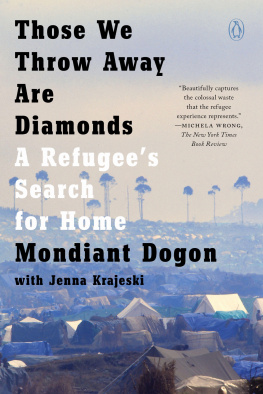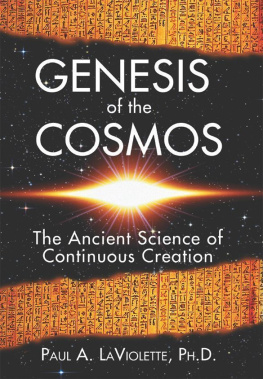Scranton Laird - The science of the Dogon : decoding the African mystery tradition
Here you can read online Scranton Laird - The science of the Dogon : decoding the African mystery tradition full text of the book (entire story) in english for free. Download pdf and epub, get meaning, cover and reviews about this ebook. City: Malawi, year: 2006, publisher: Inner Traditions, genre: Religion. Description of the work, (preface) as well as reviews are available. Best literature library LitArk.com created for fans of good reading and offers a wide selection of genres:
Romance novel
Science fiction
Adventure
Detective
Science
History
Home and family
Prose
Art
Politics
Computer
Non-fiction
Religion
Business
Children
Humor
Choose a favorite category and find really read worthwhile books. Enjoy immersion in the world of imagination, feel the emotions of the characters or learn something new for yourself, make an fascinating discovery.

- Book:The science of the Dogon : decoding the African mystery tradition
- Author:
- Publisher:Inner Traditions
- Genre:
- Year:2006
- City:Malawi
- Rating:3 / 5
- Favourites:Add to favourites
- Your mark:
- 60
- 1
- 2
- 3
- 4
- 5
The science of the Dogon : decoding the African mystery tradition: summary, description and annotation
We offer to read an annotation, description, summary or preface (depends on what the author of the book "The science of the Dogon : decoding the African mystery tradition" wrote himself). If you haven't found the necessary information about the book — write in the comments, we will try to find it.
Scranton Laird: author's other books
Who wrote The science of the Dogon : decoding the African mystery tradition? Find out the surname, the name of the author of the book and a list of all author's works by series.
The science of the Dogon : decoding the African mystery tradition — read online for free the complete book (whole text) full work
Below is the text of the book, divided by pages. System saving the place of the last page read, allows you to conveniently read the book "The science of the Dogon : decoding the African mystery tradition" online for free, without having to search again every time where you left off. Put a bookmark, and you can go to the page where you finished reading at any time.
Font size:
Interval:
Bookmark:
Praise for The Science of the Dogon
Not only is the Dogon creation myth resplendent in its sheer beauty, but it reflects the nuances of cutting-edge scientific cosmology better than any other in the world, and finally this is being recognized for the first time. Laird Scrantons The Science of the Dogon becomes a quintessential read for anyone wishing to learn the truth about this most fascinating and much-maligned subject.
ANDREW COLLINS,
AUTHOR OF THE CYGNUS MYSTERY AND
FROM THE ASHES OF ANGELS
The Science of the Dogon decodes the opaque symbols of Dogon creation myth with great ingenuity backed by solid scholarship. Highly recommended.
IDA P. MOFFETT,
EDITOR AND COPUBLISHER OF THE PALE FOX
The Science of the Dogon takes the study of the ancients to an exciting new level. Laird has cracked the visual code of the Dogon, and his explanations are thoroughly supported.
WILLIAM HENRY,
AUTHOR OF EGYPT: STARGATE DISCOVERIES VIDEO SERIES AND
GUEST HOST OF DREAMLAND WITH WHITLEY STRIEBER
THE SCIENCE
OF THE DOGON
DECODING THE AFRICAN MYSTERY TRADITION
LAIRD SCRANTON
Foreword by John Anthony West

Inner Traditions
Rochester, Vermont
The Author and Publisher wish to thank the following for permission to use their excerpted material in this book:
Interior illustrations by Ron Miller, from A Brief History of Time by Stephen W. Hawking, copyright 1988, 1996 by Stephen W. Hawking. Used by permission of Bantam Books, a division of Random House, Inc.
Selections from Codes of Evolution by Rush W. Dozier Jr., copyright 1992 by Rush W. Dozier Jr. Used by permission of Crown Publishers, a division of Random House, Inc.
Selections from Gods and Symbols of Ancient Mexico and the Maya by Mary Miller and Karl Taube, copyright 1993 Thames & Hudson Ltd., London. Reprinted by permission of Thames & Hudson, Inc.
Selections reprinted by permission of the publisher from Judaism in the First Centuries of the Christian Era: Volume 1The Age of Tannaim by George Foot Moore, Cambridge, MA: Harvard University Press, copyright 1927, 1930 by the President and Fellows of Harvard College
Selections reprinted from Myth and Symbol in Ancient Egypt by R. T. Rundle Clark, copyright 1959 Thames & Hudson Ltd., London. Reprinted by permission of Thames & Hudson, Inc.
Selections reprinted from Mythology by Edith Hamilton copyright 1942 by Edith Hamilton; copyright renewed 1969 by Dorian Fielding Reid and Doris Fielding Reid. used by permission of Little, Brown and Company, Inc.
Selections reprinted from The Orion Mystery by Robert Bauval and Adrian Gilbert, copyright 1994 by Robert Bauval and Adrian Gilbert. Used by permission of Crown Publishers, a division of Random House, Inc.
Selections and diagrams reprinted from The Pale Fox by Marcel Griaule and Germaine Dieterlen, copyright 1986 by The Continuum Foundation, permission requested of Afrikan World Books, PO Box 16447, Baltimore, MD 21217
Selections reprinted from Serge Sauneron, David Lorton (trans.), The Priests of Ancient Egypt , copyright 2000 by Cornell University. Used by permission of the publisher, Cornell University Press.
For Ogotemmeli, Marcel Griaule,
and Germaine Dieterlen

This book would not have been possible without the support and help of friends and family. In particular, I would like to thank my wife Risa, son Isaac, and daughter Hannah for their support and patience. I am also very grateful for the generous support, encouragement, and friendship of Teresa Vergani, whose insights into Dogon symbols have been a great help. I would like to thank John Anthony West for writing the foreword to this book, and for his generous and unflagging support of my work and that of other like-minded authors. I am also indebted to Doug Kenyon at Atlantis Rising magazine for printing a related article of mine on Dogon symbols, and to Martin Gray for the use of his beautiful photograph to illustrate that same article. I have greatly appreciated the enthusiasm and support of Ida Moffett Harrison and Stephen C. Infantino, whose careful work on The Pale Fox has proved so pivotal to my effort, and I wish to thank Mr. Nataki at African World Books in Baltimore for generously allowing me to quote from that work. I would also like to thank the many friends and family members who have allowed me to use them as sounding boards for my ideas (sometimes against their will), including Lynda Falkenstein, Sue and Howard Sherer, Will Newman and Sue Clark, David and Kathy Scranton, Cathy Agnello Brown, Madeleine Bohrer, John Gardenier, Bill Churchman, Eric Infante, Dave Zimmer, Doris Schwaller, all of the ladies at Monroe Pediatrics, Desiree and Andre Krueger, Bill Przylucki, Jason Colavito, Helene Hagan, Michael Sherer, Raffi Arenos, and my mother Peg Scranton for proofreading and commenting on early drafts of my manuscript. Last but not least, to cousin Harvey Kornit many psychic thanks for the copy of Ancient Near Eastern Texts .


This booksmall in size, large in significanceproves that the very latest scientific work on the structure and genesis of matter, quantum theory, and possibly both string and torsion theory was known in very ancient times. However, it was (and in certain cases still is) expressed in myth and symbol rather than in mathematical formulas.
Laird Scrantons research speaks eloquently and remarkably for itself. No advanced technical knowledge is needed to follow his arguments. To appreciate what is at stake, a brief discussion of the obstacles this work must face may prove useful.

Because the history of just about everything is written by the winners, it is invariably difficult to gauge, to judge, sometimes even to know, that a battle has taken place or that one is under way. The winners are at liberty to distort, misrepresent, or ignore all that does not support their official version, and so they do. It is this version that is disseminated in schools and through the mainstream media. As a result the public gets, and generally accepts at face value, what it has been taught.
Sometimes this doesnt matter much. If we are ignorant of the actual arguments that were once put forward by defenders of the flat earth theory, we are scarcely the poorer for it. However, in other instances, unquestioning acceptance of the winners tale may carry serious adverse consequences.
The accepted history of human civilization is one such winners tale, the history of science another. Today, on a daily basis, through every media outlet, we witness a world spinning out of control. This should be obvious to everyone. Able commentators analyze menacing, possibly irreversible, trends from every quarter and angle: environmental, ecological, economic, medical, military, political, sociological. Such trends include global warming, irreversible pollution, looming epidemics, peak oil, development of weapons of mass destruction, nuclear proliferation, overpopulation. The litany is endless, familiar, and numbingly repetitious. Yet beneath the racket, subaudibly and never openly articulated (because it is considered self-evident), a comforting ostinato sounds.
We are endlessly assured by history and by science (and therefore by and large we believe) that despite all those looming doomsday scenarios, we of the twenty-first century represent the most advanced, most developed, and most highly evolved human beings ever to inhabit the planet. No one has been taught anything seriously contrary to these beliefs in high school or university; nothing in our most respected Western mainstream media organs (e.g., New York Times, Scientific American, National Geographic ) would suggest an alternative to, or reconsideration of, our firmly entrenched historical and scientific winners tale although even these sources routinely publish articles from archaeology, archaeoastronomy, and other subdisciplines devoted to the past that, put together, would suggest that a comprehensive reconsideration is in order.
Next pageFont size:
Interval:
Bookmark:
Similar books «The science of the Dogon : decoding the African mystery tradition»
Look at similar books to The science of the Dogon : decoding the African mystery tradition. We have selected literature similar in name and meaning in the hope of providing readers with more options to find new, interesting, not yet read works.
Discussion, reviews of the book The science of the Dogon : decoding the African mystery tradition and just readers' own opinions. Leave your comments, write what you think about the work, its meaning or the main characters. Specify what exactly you liked and what you didn't like, and why you think so.



